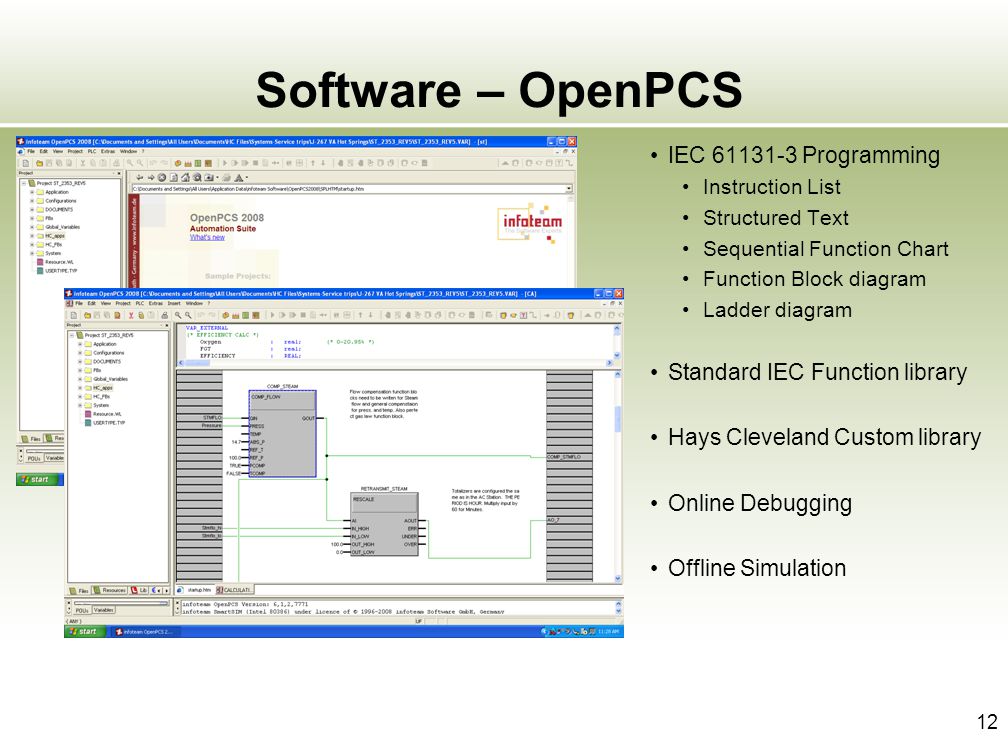Structured Text Command List
Inline markupThe standard reST inline markup is quite simple: use.one asterisk:.text. for emphasis (italics),.two asterisks:.text. for strong emphasis (boldface), and.backquotes: ``text`` for code samples.If asterisks or backquotes appear in running text and could be confused withinline markup delimiters, they have to be escaped with a backslash.Be aware of some restrictions of this markup:.it may not be nested,.content may not start or end with whitespace:.
text. is wrong,.it must be separated from surrounding text by non-word characters.

Structured Text Operators
The objective is to send a command to the output card according to the values of the inputs. So, I'm writting a small Structured Text program, but I can't send a command to the output card. The variables are 1 DPI input variable called voltaje0 and 1 DCO output variable called PUMP0. A complete list of the over 280 Command Prompt commands across Windows 8, 7, Vista, and XP, including full descriptions of each CMD command. The prompt command is used to customize the appearance of the prompt text in Command Prompt or MS-DOS. The prompt command is available in all versions of Windows, as well as in MS-DOS.
Use abackslash escaped space to work around that: thisis.one. word.These restrictions may be lifted in future versions of the docutils.It is also possible to replace or expand upon some of this inline markup withroles. Refer to for more information. This is a normal text paragraph. The next paragraph is a code sample:: It is not processed in any way, except that the indentation is removed. +-+-+-+-+ Header row, column 1 Header 2 Header 3 Header 4 (header rows optional) body row 1, column 1 column 2 column 3 column 4 +-+-+-+-+ body row 2.
+-+-+-+-+Simple tables are easier to write, butlimited: they must contain more than one row, and the first column cells cannotcontain multiple lines. They look like this. This is a heading Normally, there are no heading levels assigned to certain characters as thestructure is determined from the succession of headings.

However, thisconvention is used in which you mayfollow:.# with overline, for parts. with overline, for chapters.=, for sections.-, for subsections.^, for subsubsections.'
, for paragraphsOf course, you are free to use your own marker characters (see the reSTdocumentation), and use a deeper nesting level, but keep in mind that mosttarget formats (HTML, LaTeX) have a limited supported nesting depth. RolesA role or “custom interpreted text role” is an inlinepiece of explicit markup. It signifies that that the enclosed text should beinterpreted in a specific way.
Structured Text Programming Guide
Sphinx uses this to provide semantic markup andcross-referencing of identifiers, as described in the appropriate section. Thegeneral syntax is:rolename:`content`.Docutils supports the following roles:.– equivalent of.emphasis.– equivalent of.strong.– equivalent of ``literal``.– subscript text.– superscript text.– for titles of books, periodicals, and othermaterialsRefer to for roles added by Sphinx. Explicit Markup“Explicit markup” is used in reST formost constructs that need special handling, such as footnotes,specially-highlighted paragraphs, comments, and generic directives.An explicit markup block begins with a line starting with. Followed bywhitespace and is terminated by the next paragraph at the same level ofindentation. (There needs to be a blank line between explicit markup andnormal paragraphs.
This may all sound a bit complicated, but it is intuitiveenough when you write it.). DirectivesA directive is a generic block of explicit markup.Along with roles, it is one of the extension mechanisms of reST, and Sphinxmakes heavy use of it.Docutils supports the following directives:.Admonitions:, and the generic. (Most themes style only “note” and“warning” specially.).Images:.(see also below).(an image with caption and optional legend).Additional body elements:.(a local, i.e. Function:: foo(x)foo(y, z):module: some.module.nameReturn a line of text input from the user.function is the directive name. It is given two arguments here, theremainder of the first line and the second line, as well as one optionmodule (as you can see, options are given in the lines immediatelyfollowing the arguments and indicated by the colons).
Options must be indentedto the same level as the directive content.The directive content follows after a blank line and is indented relative tothe directive start. Image:: gnu.png(options)When used within Sphinx, the file name given (here gnu.png) must either berelative to the source file, or absolute which means that they are relative tothe top source directory. For example, the file sketch/spam.rst couldrefer to the image images/spam.png as./images/spam.png or/images/spam.png.Sphinx will automatically copy image files over to a subdirectory of the outputdirectory on building (e.g. The static directory for HTML output.)Interpretation of image size options ( width and height) is as follows:if the size has no unit or the unit is pixels, the given size will only berespected for output channels that support pixels.
Other units (like pt forpoints) will be used for HTML and LaTeX output (the latter replaces pt bybp as this is the TeX unit such that 72bp=1in).Sphinx extends the standard docutils behavior by allowing an asterisk for theextension. GotchasThere are some problems one commonly runs into while authoring reST documents:.Separation of inline markup: As said above, inline markup spans must beseparated from the surrounding text by non-word characters, you have to use abackslash-escaped space to get around that.
See for the details.No nested inline markup: Something like.see:func:`foo`. is notpossible.FootnotesWhen the default domain contains a class directive, thisdirective will be shadowed. Therefore, Sphinx re-exports it asrst-class.